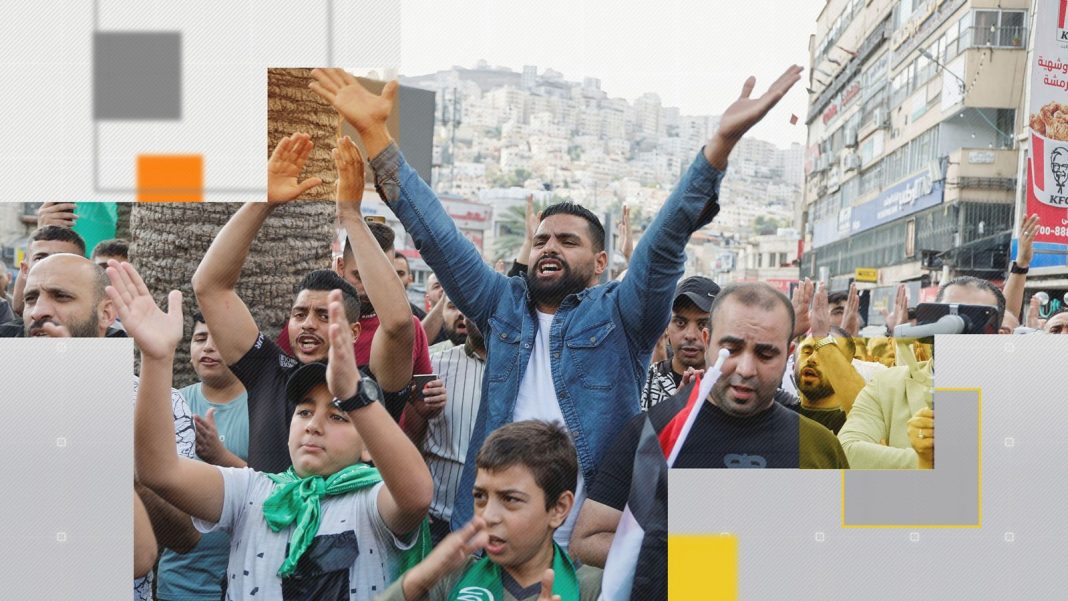Even before the war in Gaza raised tensions between Israeli settlers and Palestinians, 2023 was set to be the West Bank’s deadliest year on record.
UN figures show that up to 19 September, 25 Israelis had been killed by Palestinians and 189 Palestinians were killed by Israelis – in both cases, the highest since data collection began in 2008.
Since then, the violence has escalated.
The UN has recorded 88 killings of Palestinians by Israelis since 7 October, with one Israeli killed by Palestinians.
As the violence grows, a different kind of conflict is emerging. Violence against Palestinians has increasingly come not just from Israeli soldiers, but also civilian settlers.
Since the war began, the UN has recorded 102 attacks by extremist Israeli settlers targeting West Bank Palestinians or their property.
That’s an average of more than seven every day, compared to three per day before the war started.
Sky News has spoken to witnesses and verified footage from two attacks in different regions of the West Bank since 7 October, showing how they were able to unfold in the presence of Israeli forces.
They also reveal the rising levels of tension among residents and soldiers there.
“Despite Israeli soldiers and settlers continually attacking and, in some cases, killing Palestinians in great numbers, the West Bank has remained relatively quiet,” says Mairav Zonszein, a senior analyst at the International Crisis Group.
“But that’s something that’s certainly capable of escalating quite quickly.”
Speaking to Sky News on 18 October, IDF spokesperson Lt Col Jonathan Conricus said the army was on “high alert” due to the risk of West Bank Palestinians trying to “copy or emulate the same type of attacks that Hamas did […] in the communities around the Gaza strip”.
How a deadly attack on a Palestinian village unfolded
The deadliest settler attack in years took place on 11 October in the town of Qusra, near Nablus, four days after the Gaza conflict began.
Sky News spoke to Qusra resident Khaled Al-Wadi, who said that settlers began by attacking the house of Maad Awda, 29, whose father Mahmoud had been killed during a similar attack in 2017.
“When [Maad] tried to evacuate his house, they opened fire,” says Khaled.
“He got hit in his head, and his young daughter, no more than six years old, got hit as well.”
Footage of the attack, verified by Sky News, shows five masked gunmen opening fire near the village, with another person driving an off-road vehicle.
Please use Chrome browser for a more accessible video player
0:16
Shooting in the village of Qusra, 11 October
Maad was killed along with three others: Massaab Abu Reida, 18, Eibada Thaeid, 17, and 22-year-old Hassan Abu Sorour.
The next day, as locals gathered to pay their respects, the funeral procession was attacked.
Khaled’s brother and father, Ahmed and Ibrahim Al-Wadi, were killed.
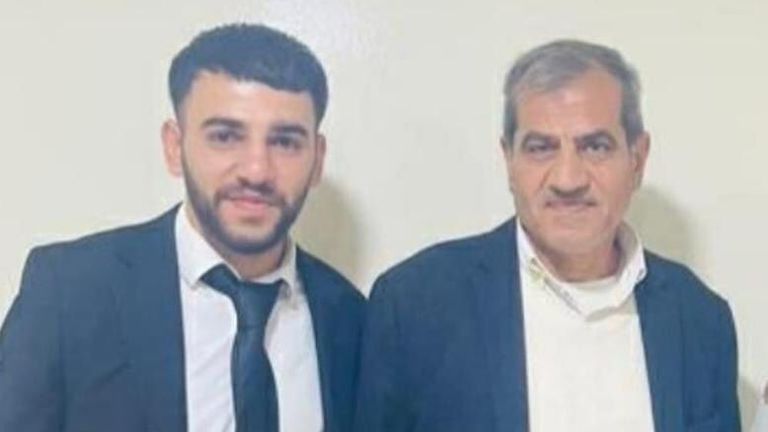
Ahmed Al-Wadi and his father Ibrahim Al-Wadi, who were killed during a settler attack on a funeral in Qusra, West Bank, on 12 October
“Ahmed was engaged,” says Khaled. “He was supposed to get married next June.”
“It’s a tragedy and a crime,” he says. “The whole town is grieving – just within 24 hours they’re given six martyrs.”
Sky News has verified footage of the funeral procession taken during the attack. The footage shows Israeli police arriving to a tense scene, and being directed by an attendee to pull over. It’s not clear whether there had already been shooting beforehand.
As the police open their car door, the attendees suddenly flee into a nearby field. Shots are fired near to where they had been standing. The police, heavily armed, run along the road. One man says that people have been killed.
Please use Chrome browser for a more accessible video player

0:30
Shooting at a funeral in Qusra on 12 October
“People don’t sleep at night”
“There are settlers walking around in army uniform, armed, vandalising property, intimidating people,” says Mairav Zonszein.
“We’ve seen several communities forcibly displaced as a result.”
A sweeping curfew in place since the war began has limited the ability of Palestinian, Israeli and international activists to document such incidents, Mairav says.
Basel Adra, a 27-year-old journalist, says Palestinians have never been so scared of the settlers.
“They want revenge [for Hamas’s attack],” he says. “A lot of people don’t sleep at night, we just do shifts.”
On Thursday, 12 October, a group of armed settlers approached the house of Basel’s uncle Hafez Huraini, 52, in the southern village of At-Tuwani.
Footage of the incident, verified by Sky News, shows how the attack unfolded.
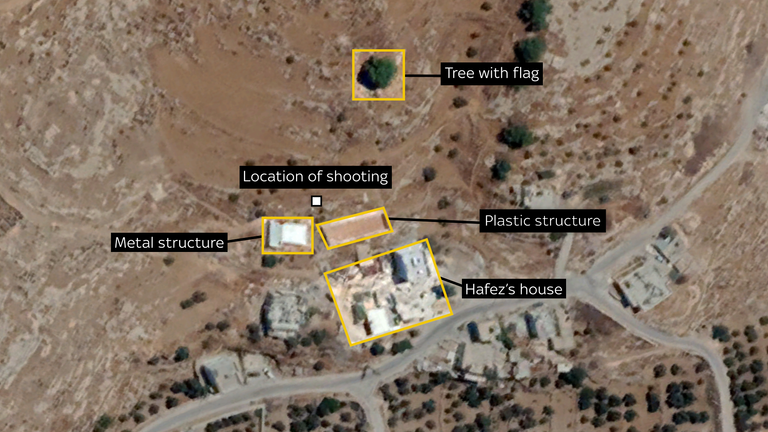
Map of key locations in the settler attack on the West Bank village of At-Tuwani on 12 October
The video below shows the armed men walking across Hafez’s land, beneath a tree on which a large Israeli flag has been planted.
A bearded man in military uniform runs towards the goat pens next to Hafez’s house, where international volunteers from the group Operation Dove are filming.
He is soon joined by two other armed men.
As the volunteers retreat behind a concrete barrier, we hear a shot in the background, followed by two shots at close range.
Please use Chrome browser for a more accessible video player
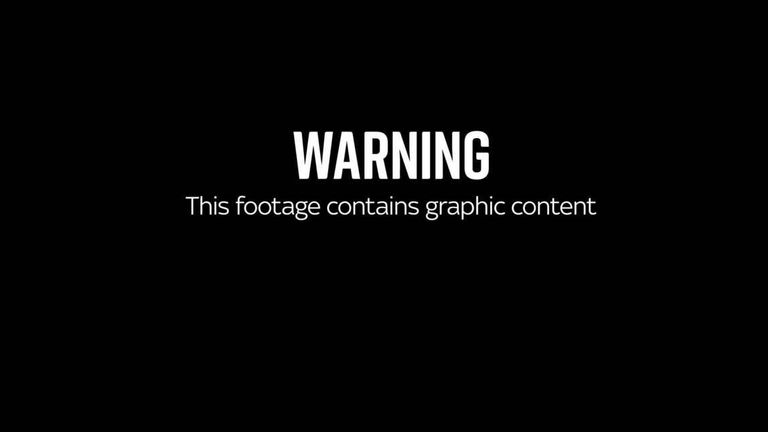
0:10
Shots were fired during an attack on At-Tuwani on 12 October
A few seconds later, we can see the bearded man fire in the direction of the bystanders.
Please use Chrome browser for a more accessible video player
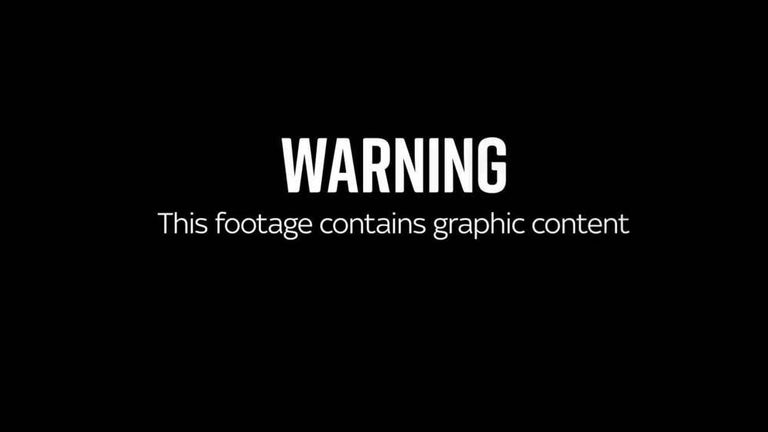
0:10
Shots were fired during an attack on At-Tuwani on 12 October
None of the volunteers were hit, Basel says, and a bullet fired at Hafez also missed.
Basel claims Hafez was then injured after he was struck “with a rifle in front of his home,” although Sky News has not seen evidence of that incident.
The next day, Basel, two armed settlers and a soldier approached a house on the edge of the village and assaulted its occupant.
Children playing in the street alerted worshippers at the nearby mosque, who rushed to help. Basel started filming.

Map of key locations in the shooting of Zakarya Adra, 28, during a settler attack in the West Bank village of At-Tuwani on 13 October
“The people start shouting at the soldier to take [the settler] away,” says Basel.
The gunman approached the crowd. He then pushed Basel’s cousin Zakarya Adra and shot him at point-blank range.
Please use Chrome browser for a more accessible video player
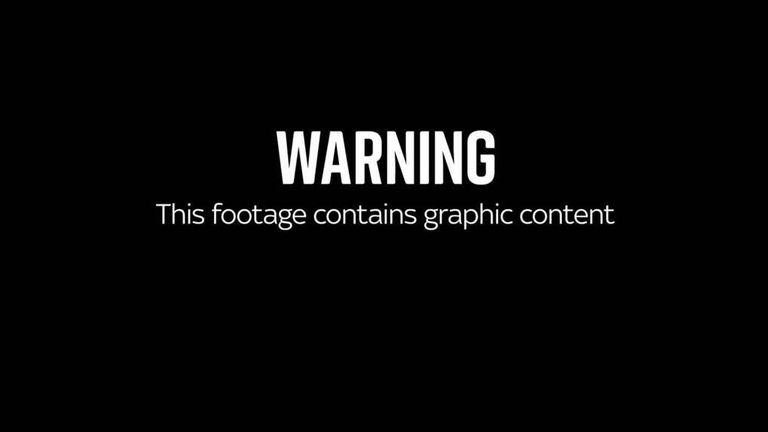
0:44
Footage shows a settler shooting a Palestinian in At-Tawani on 13 October
As Zakarya crawled to safety, the gunman walked over to a nearby soldier.
Zakarya, 28, was hit in the torso. His family say the bullet splintered, with shrapnel hitting his stomach, liver and kidneys.
According to witnesses, bystanders tried calling an ambulance but to no avail – the military had blocked off all roads leading to Yatta, the nearest city, as part of the general curfew.
Instead, they bundled Zakarya into a car and drove down dirt roads.
“When they got to Yatta, the hospital wanted to move him to Hebron,” says Basel.
“They put him in an ambulance, but when they approached the entrance of Yatta the army shot in the air and told them to go back. He lost a lot of blood during all this driving.”
Zakarya remains in hospital in a serious but stable condition.
An IDF spokesperson said of Zakarya’s shooting: “A report was received about an Israeli civilian who fired at a Palestinian. […] The Israel Police opened an investigation into the incident. The weapon was confiscated from the suspect.”
Regarding the incident a day earlier, they said: “A reserve soldier shot into the air contrary to the procedures. The incident will be reviewed and the procedures refined to him.”
The worst year on record
“This is not something new,” says Mairav Zonzsein of the International Crisis Group.
“Palestinians in the West Bank have been suffering settler violence for years. But in the last few years it has risen every year, and this is the worst year on record.”
Since the war began, the UN says, 545 Palestinians (half of whom are children) have been displaced due to access restrictions and increased settler violence.
Displacements have escalated, but are a longstanding issue. A UN report on 3 October, four days before the war began, found that 13 families had been displaced from Masafer Yata, the region surrounding At-Tuwani, in just three months.
Israel has long claimed sovereignty over parts of the West Bank and says Jewish settlements have existed in the area for centuries.
On coming to power in December 2022, Prime Minister Benjamin Netanyahu’s government made the expansion of Israeli settlements in the West Bank a top priority.
The coalition agreement was led by a commitment to “advance and develop a settlement in all parts of the land of Israel” including “Judea and Samaria”, the biblical names for the West Bank.
Israel’s settlements are considered illegal under international law, a position affirmed by the governments of the UK, EU and US. Despite this, they have continued to expand.
In 1987, there were just 60,000 Israeli settlers living in the West Bank (excluding East Jerusalem). By 2005, this had quadrupled to 247,300, and by 2021 it had reached 465,400.
Based on recent trends, the figure likely exceeded half a million for the first time this year.
Further expansion is planned. During the first six months of this year, Israel advanced plans for a record 12,855 settlement housing units covering an area the size of 600 football fields.
Several government ministers are settlers themselves, including National Security Minister Itamar Ben Gvir.
In a statement on a fatal settler attack in August, Ben Gvir said of the alleged killer: “My policy is clear. Anyone who defends himself against rock-throwing should get a medal of honour.”
Then on 10 October, in the wake of Hamas’s massacres of Israeli civilians, Ben Gvir promised to provide 10,000 rifles to civilian security teams, including West Bank settlers.
“What you have right now is one enormous sense of revenge for [Hamas’s attack],” says Mairav.
“So that’s a very, very dangerous situation. And Israeli government ministers certainly aren’t helping with the language and their arming of settlers. This is a government that’s explicitly interested in taking West Bank land. So, it’s a very disastrous situation.”
“There is no accountability”
Tariq Abeleen, a 28-year-old primary school English teacher from the village of Umm al-Kheir has been documenting settler violence in the region since the war began.
“It’s a very grim situation, there is no accountability. Crimes could happen very easily. It’s scary. Every thirty minutes there is something.
Tariq says it’s very hard to hold settlers accountable in normal times, let alone during the current war. “They will just get away with it,” he says.
Unlike settlers, who are subject to Israeli civil law, Palestinians living in Israeli-administered parts of the West Bank are subject to military law.
Israeli human rights group Yesh Din has tracked the progress of 1,535 complaints related to settler violence since 2005. Of those, just 12 have led to full convictions.
The strict curfew and risk of attacks has forced Tariq’s school to switch to online learning.
“We use WhatsApp groups to send educational materials to students, even though most people in this area don’t have access to the internet,” he says.
“It’s like corona. In times of corona people were afraid of the disease. Now we are afraid of the settlers.”
The Data and Forensics team is a multi-skilled unit dedicated to providing transparent journalism from Sky News. We gather, analyse and visualise data to tell data-driven stories. We combine traditional reporting skills with advanced analysis of satellite images, social media and other open source information. Through multimedia storytelling we aim to better explain the world while also showing how our journalism is done.


